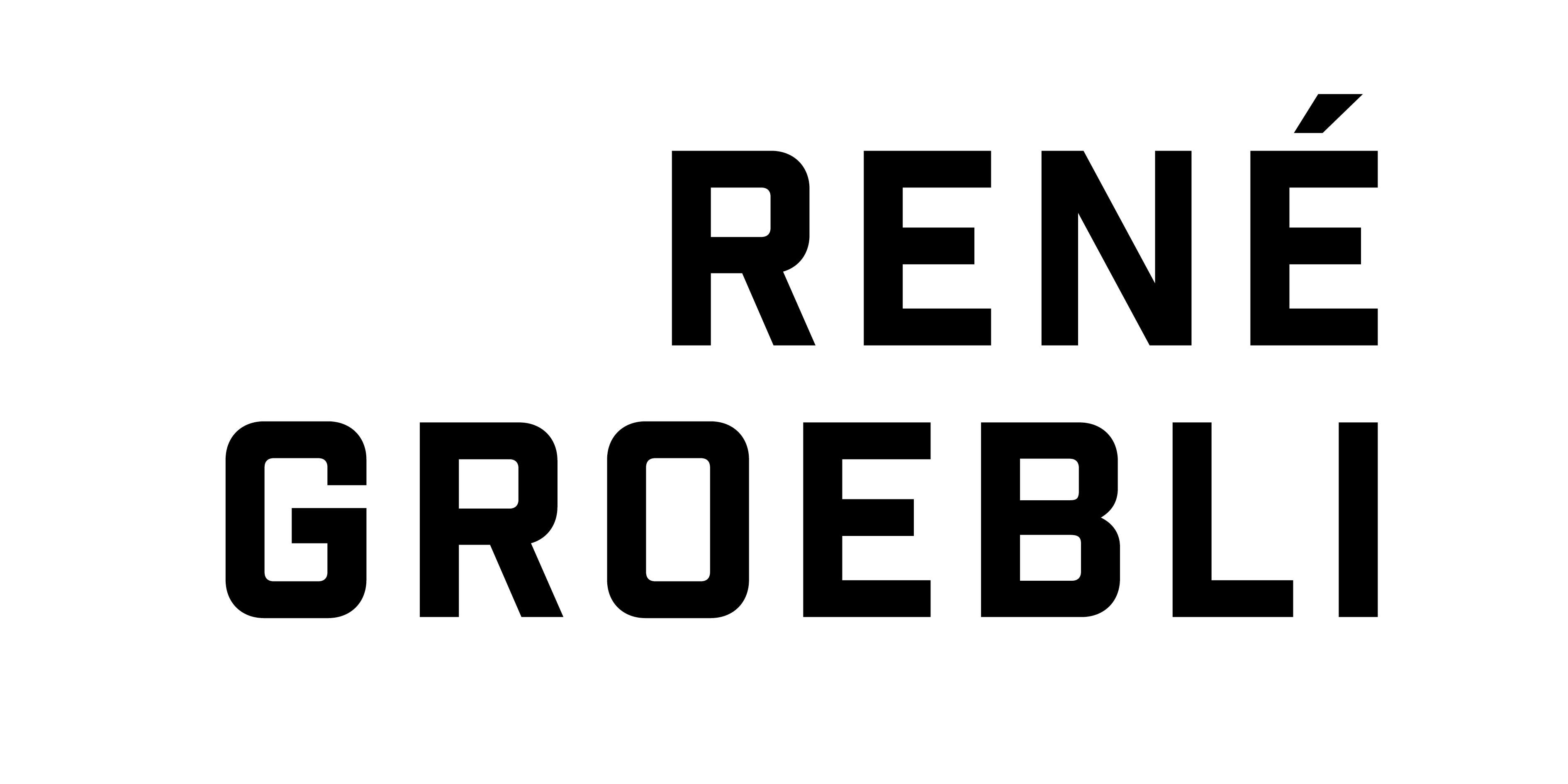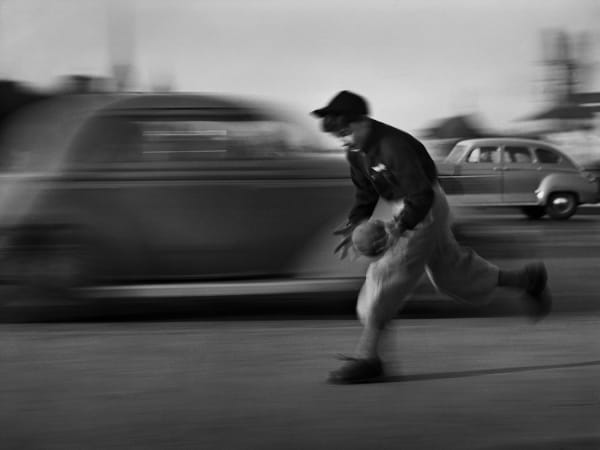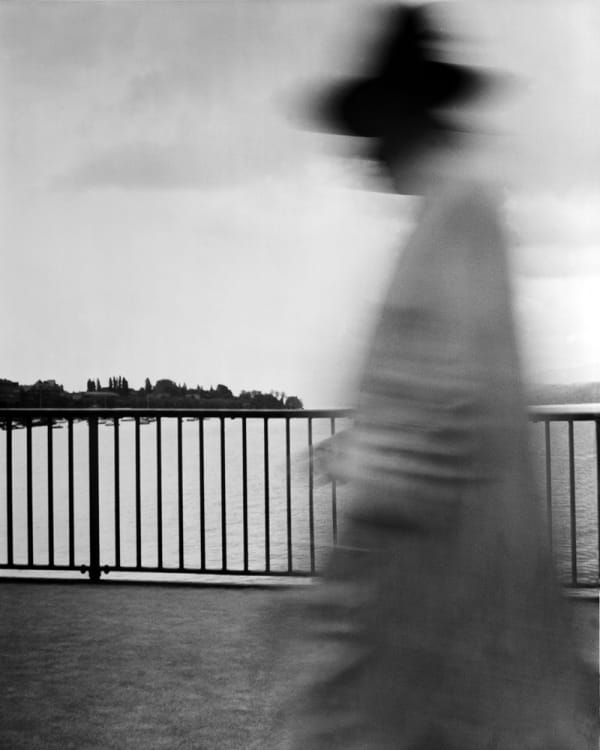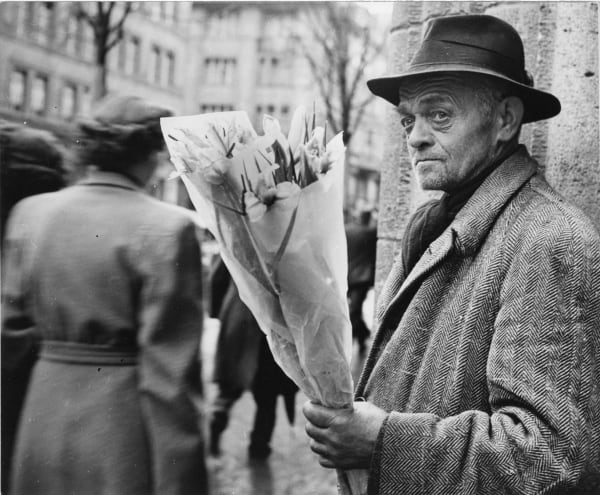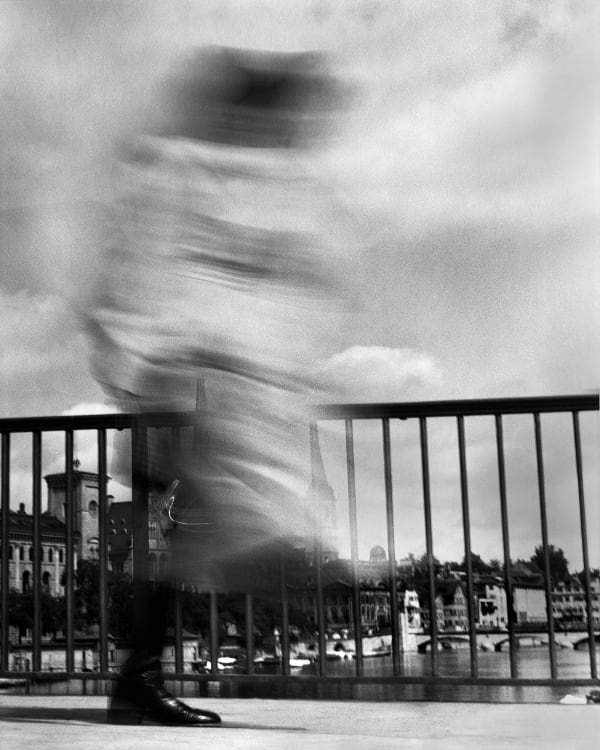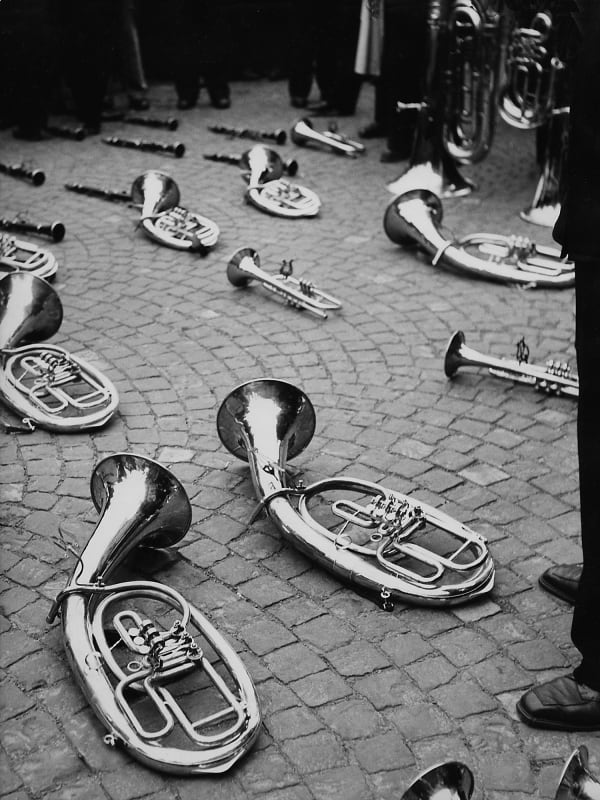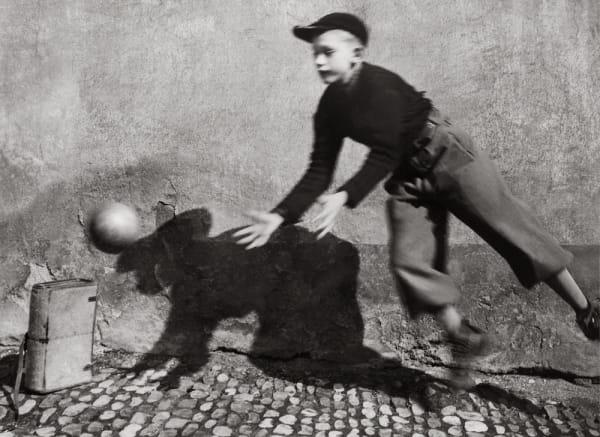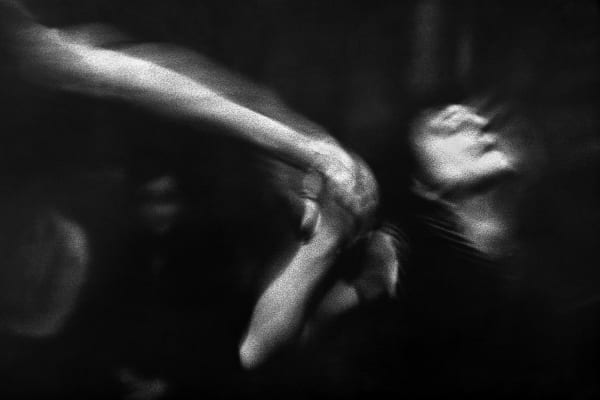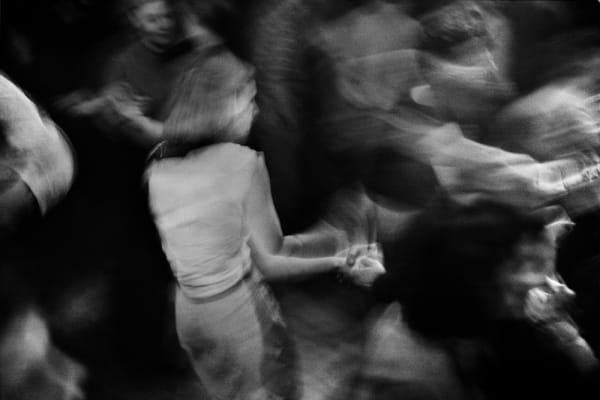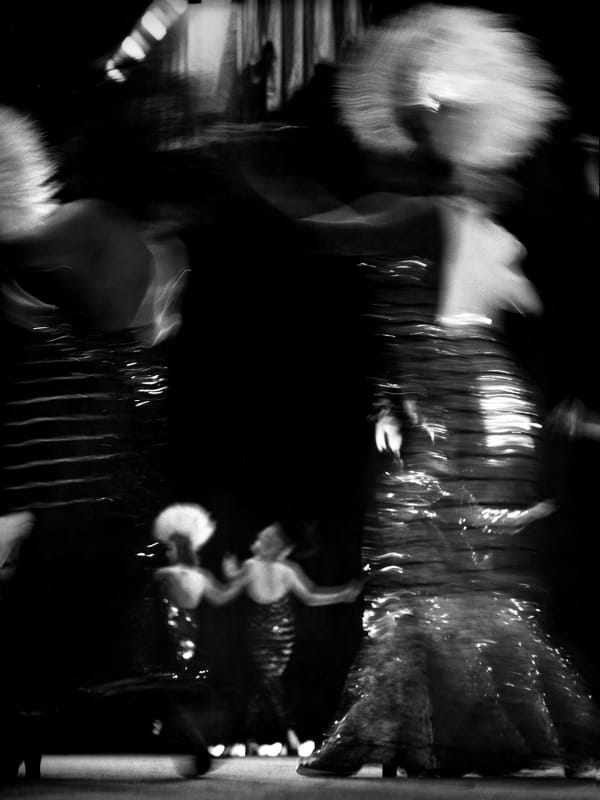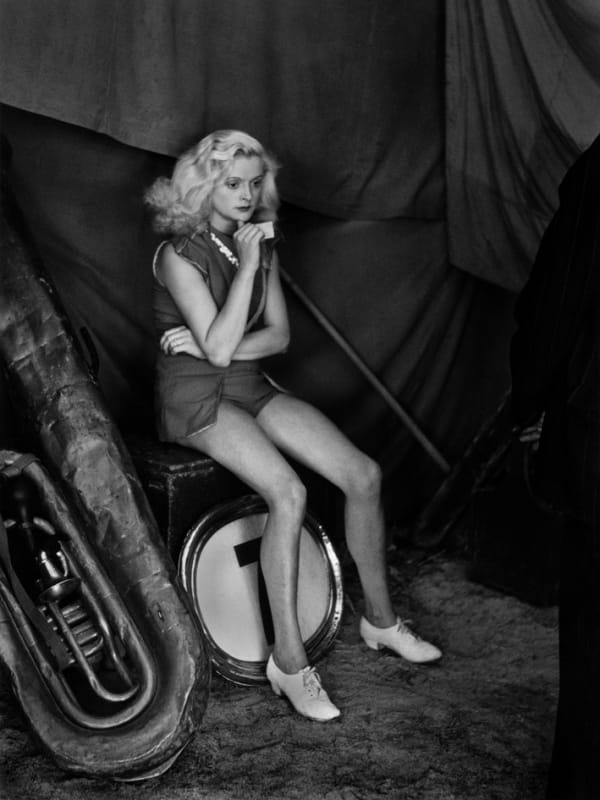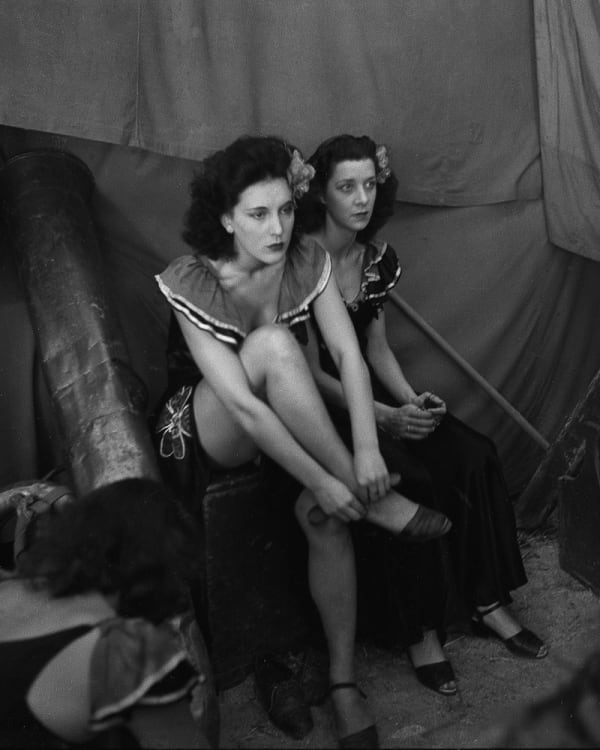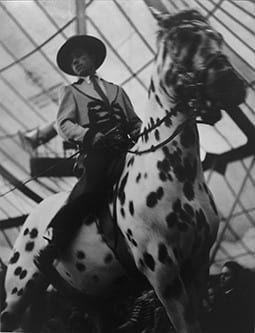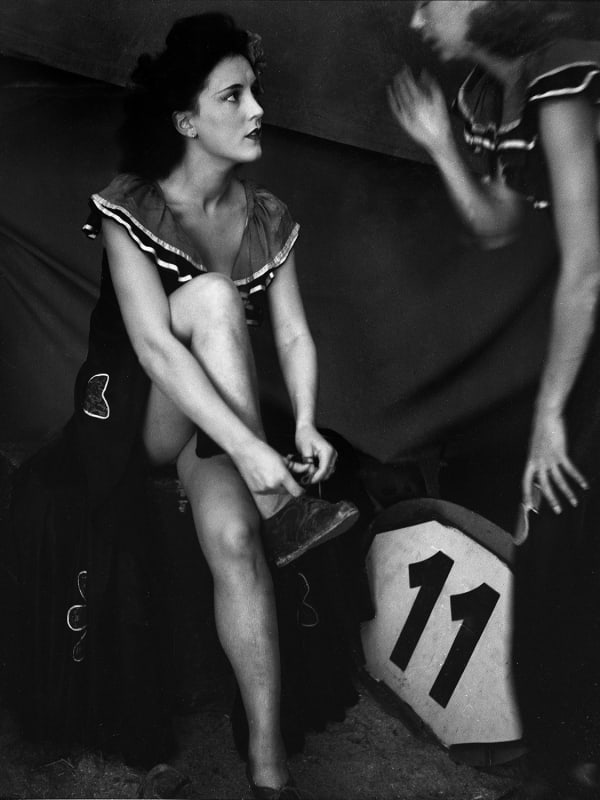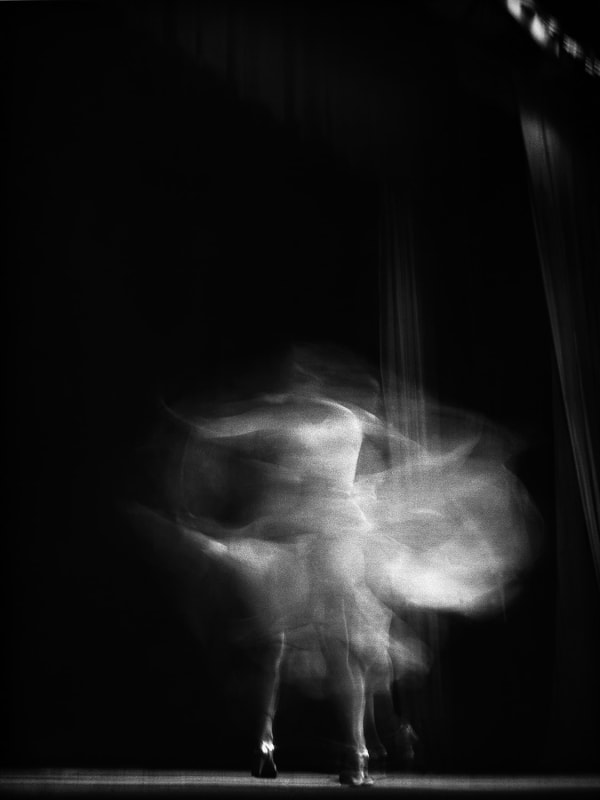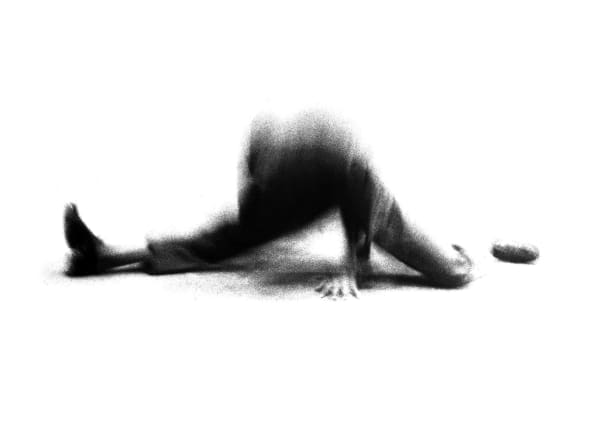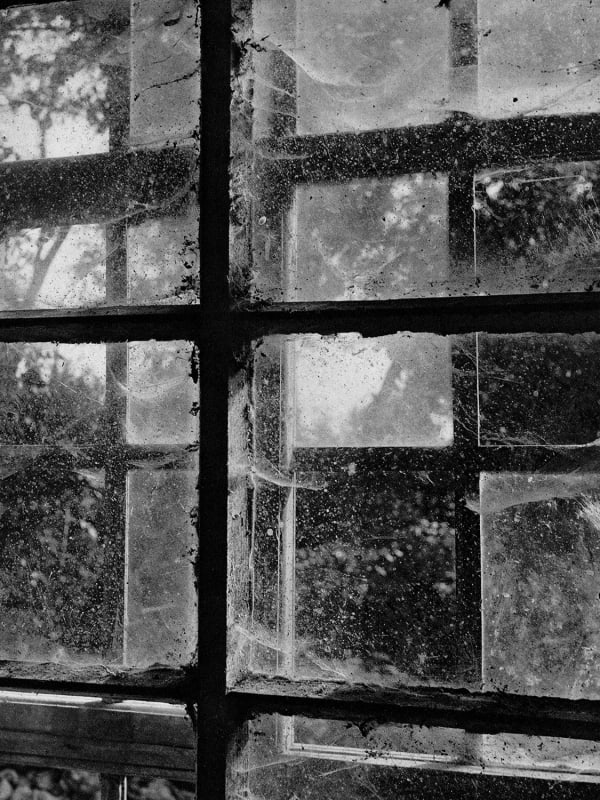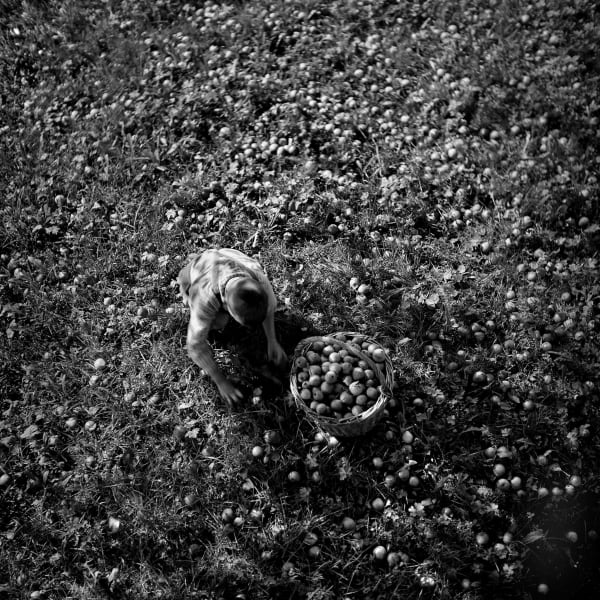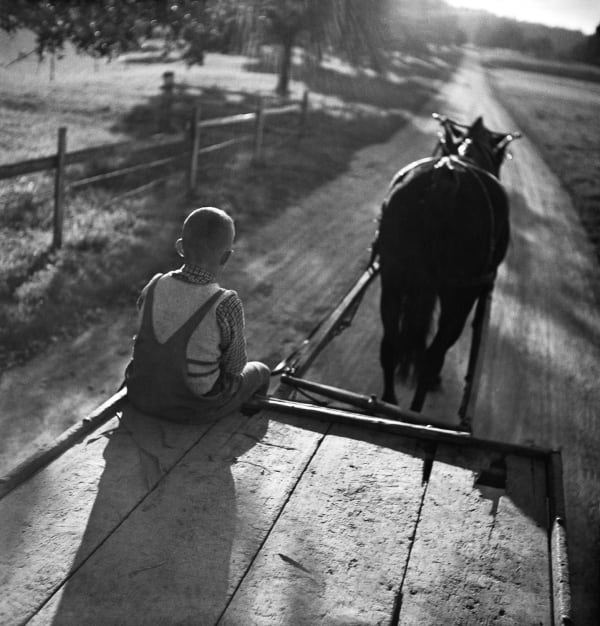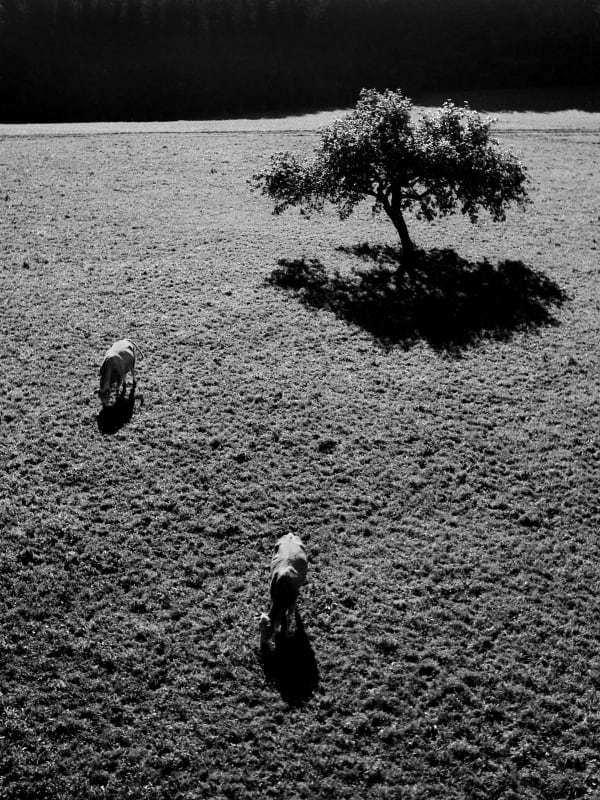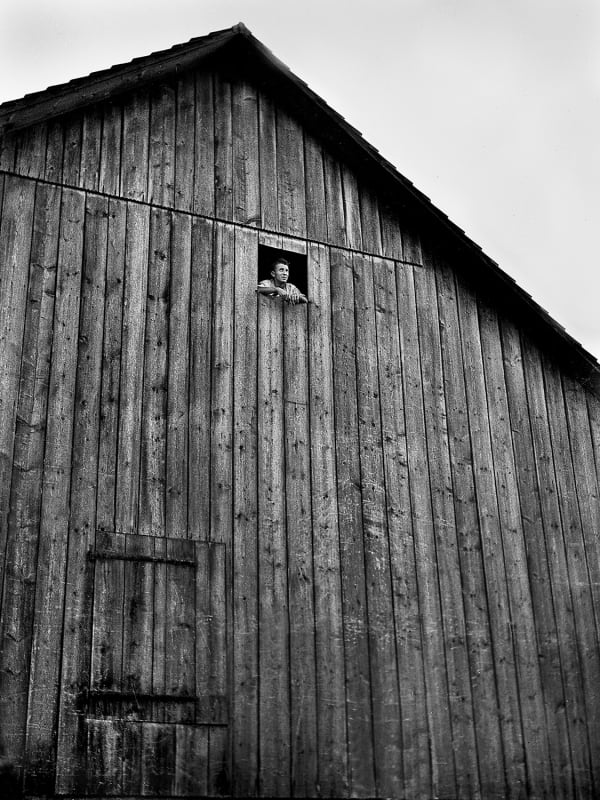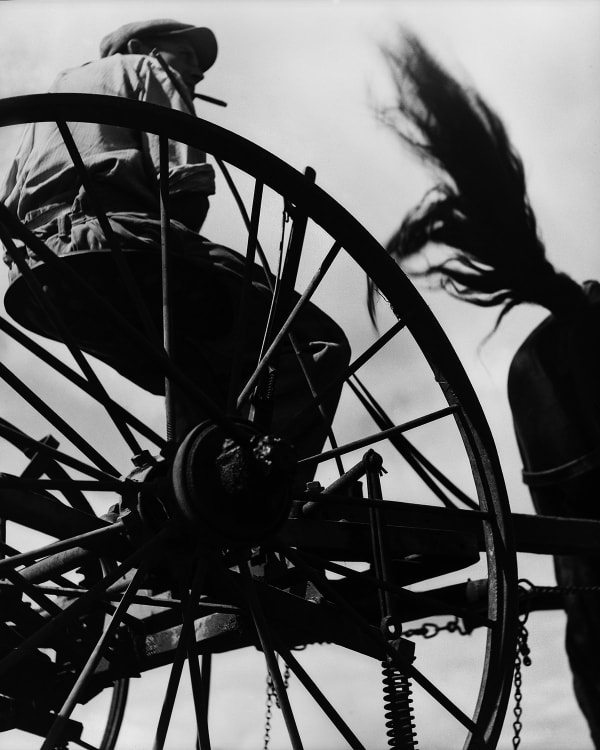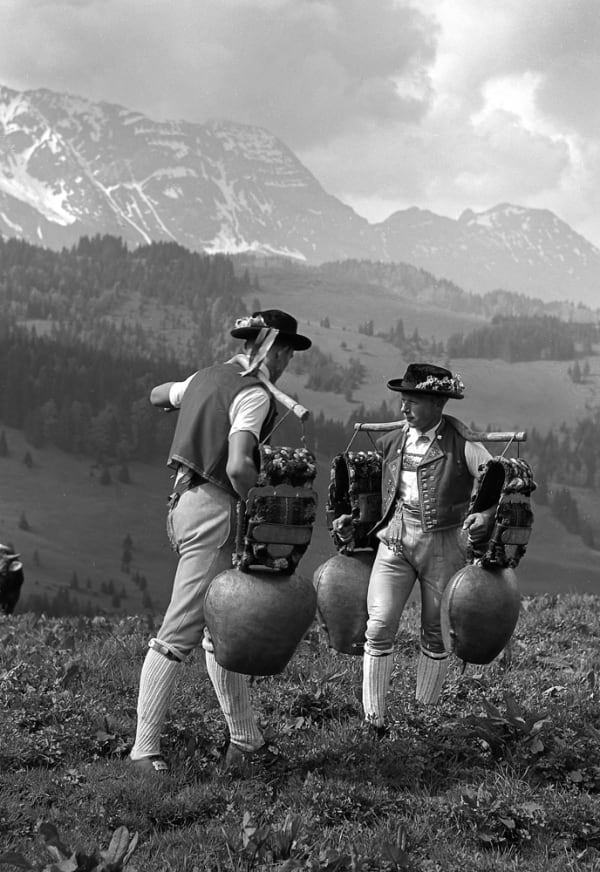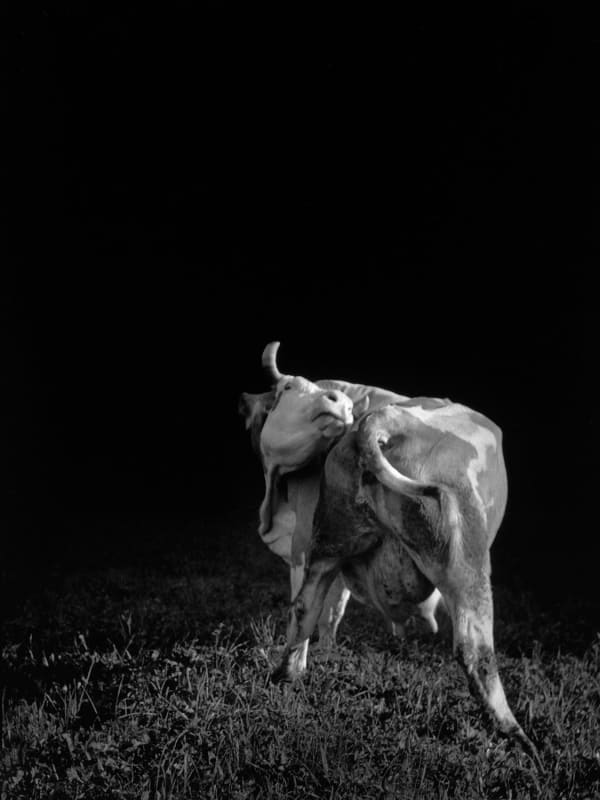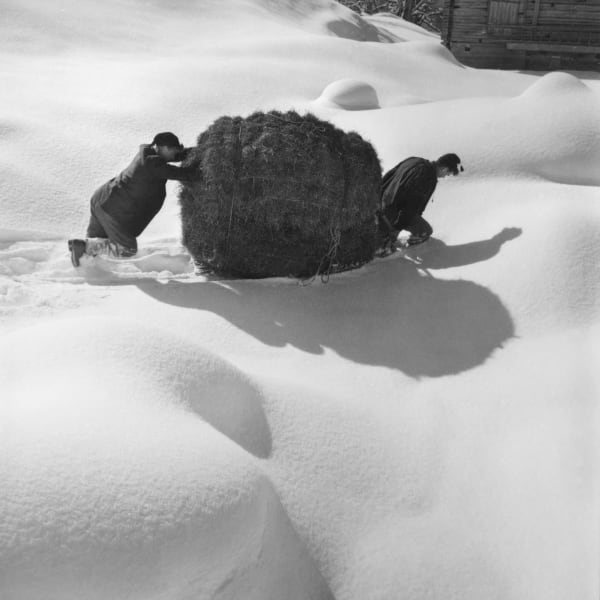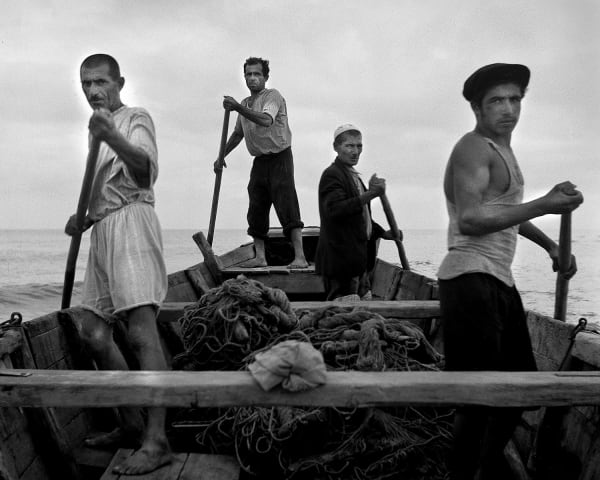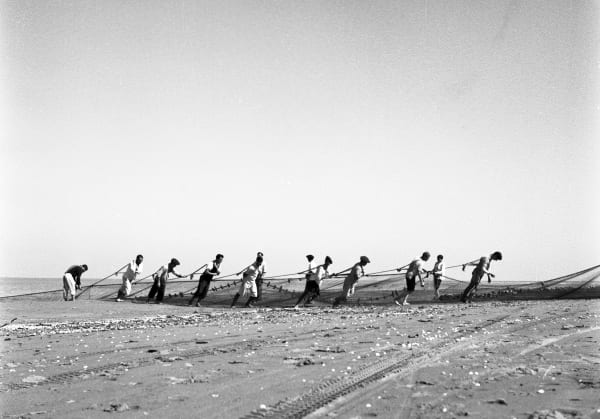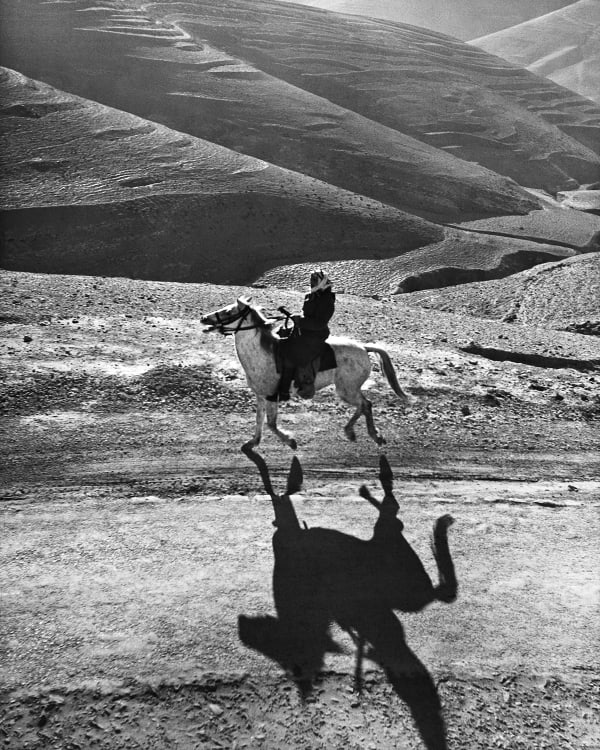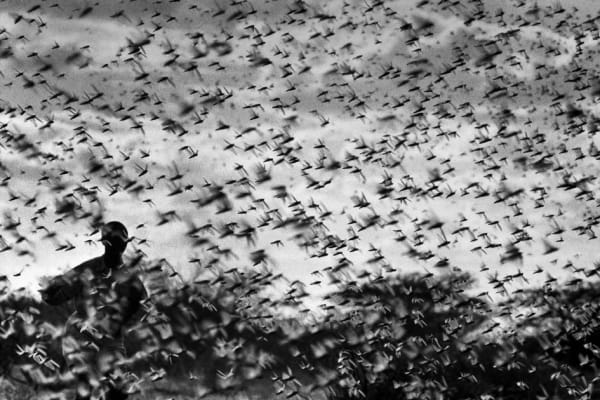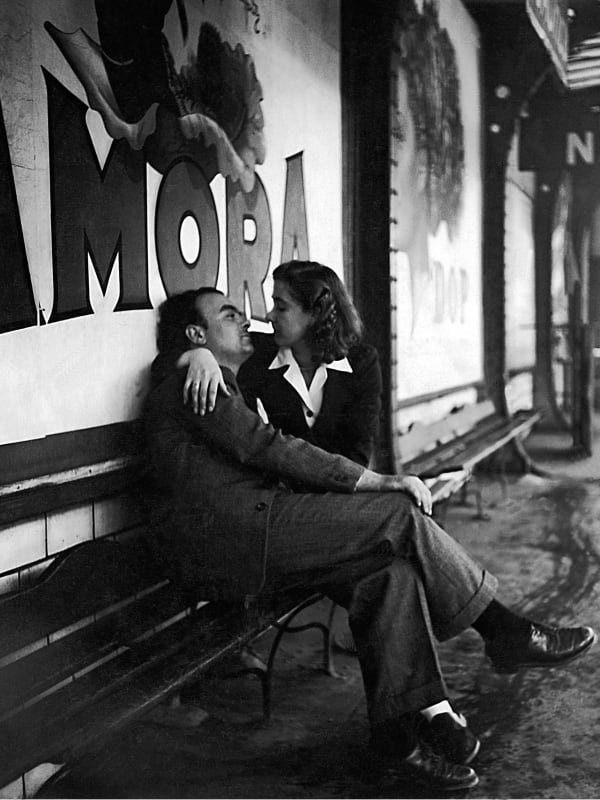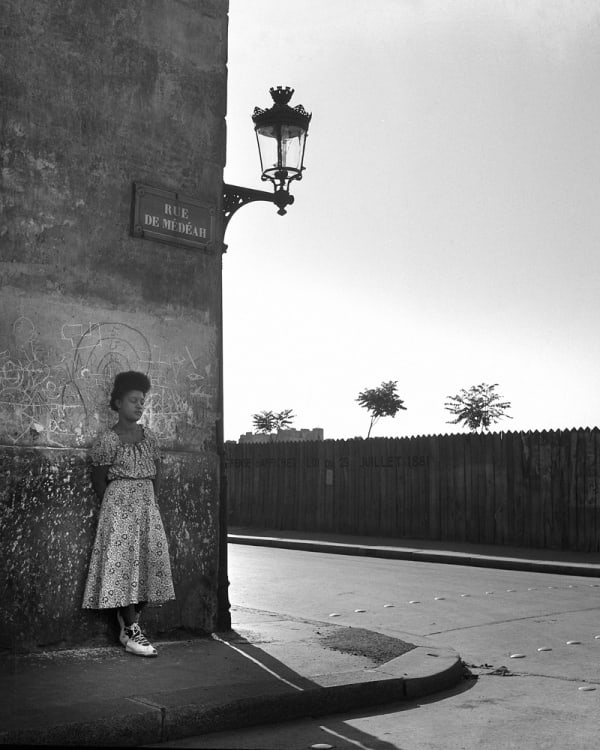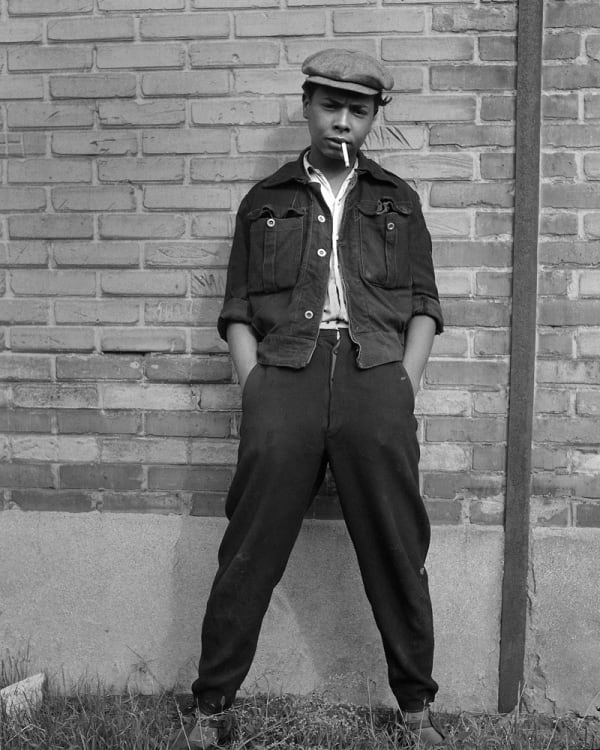“If anything can be discerned in his early photography in particular, it is a penchant for cinematic strategies, for montage techniques, […] a passion for tempo and movement, articulated through blurring, and a [deliberate] lack of sharpness, a clearly forward-moving aesthetic.”
From the very beginning, René Groebli embraced a rather innovative approach to photography; He was always drawn to motion, dynamic composition and the coincidental – which was completely at odds with the cool, neutral style of New Objectivity then taught in art schools. Groebli, however, was not afraid to break new photographic ground in order to photographically render his very own vision:
“When I was 18, I began experimenting with my father’s Rolleiflex. Thus began my passion for photography. During my time at the School of Applied Arts, I was excited by the possibilities of capturing motion sequences in static single images. The results, which fascinated me, met with fierce rejection by my teachers.”
Between the schools of Hans Finsler's cool formalism and Arnold Kübler's focus on post-war reportage that sought to be as objective as possible, Groebli learned and eventually mastered both, but it did not satisfy him. He was seeking not only information but emotion, not just precision but personal voice. Determined to visualize his perception, he wouldn’t shy away from breaking with convention to explore new photographic strategies. Groebli was also a pioneer in the expressive use of color, both technically and aesthetically, at a time when most still worked in black and white.
-
-
 René Groebli, Riding a bicycle freehanded/Freihändig auf dem Fahrrad (#307), Zürich, Schweiz, 1946
René Groebli, Riding a bicycle freehanded/Freihändig auf dem Fahrrad (#307), Zürich, Schweiz, 1946 -
 René Groebli, Ball game on Quaibrücke bridge/Ballspiel auf der Quaibrücke (#619), Zürich, 1949
René Groebli, Ball game on Quaibrücke bridge/Ballspiel auf der Quaibrücke (#619), Zürich, 1949 -
 René Groebli, Passant auf Quaibrücke (#610), Vintage, 1946
René Groebli, Passant auf Quaibrücke (#610), Vintage, 1946 -
 René Groebli, Café Select mit Hürlimann Pferden (#664), Zürich, Early Work, Vintage, 1946
René Groebli, Café Select mit Hürlimann Pferden (#664), Zürich, Early Work, Vintage, 1946
-
 René Groebli, Blumenverkäufer (#378), Zürich, vintage, 1946
René Groebli, Blumenverkäufer (#378), Zürich, vintage, 1946 -
 René Groebli, Passant auf Quaibrücke (#611), Zürich, Early Work, Vintage, 1946
René Groebli, Passant auf Quaibrücke (#611), Zürich, Early Work, Vintage, 1946 -
 René Groebli, Münsterplatz (#273), Zürich, Early Work, Vintage, 1945
René Groebli, Münsterplatz (#273), Zürich, Early Work, Vintage, 1945 -
 René Groebli, Torwart (#372), Zürich, Vintage, 1950
René Groebli, Torwart (#372), Zürich, Vintage, 1950
-
 René Groebli, Tresterclub Zürich (#603), Early Work, vintage, 1947
René Groebli, Tresterclub Zürich (#603), Early Work, vintage, 1947 -
 René Groebli, Künstler-Maskenball (#602), Kongresshaus, Zürich, Vintage, 1947
René Groebli, Künstler-Maskenball (#602), Kongresshaus, Zürich, Vintage, 1947 -
 René Groebli, Tresterclub (#604), Vintage, 1947
René Groebli, Tresterclub (#604), Vintage, 1947 -
 René Groebli, Cocktail 48, Corso (#660), Zürich, Early Work, Vintage, 1948
René Groebli, Cocktail 48, Corso (#660), Zürich, Early Work, Vintage, 1948
-
 René Groebli, Number girl, Circus Knie/Nummerngirl, Zirkus Knie (#616), Zürich, 1948
René Groebli, Number girl, Circus Knie/Nummerngirl, Zirkus Knie (#616), Zürich, 1948 -
 René Groebli, Zirkus Knie, Zürich, (#1720), Vintage, 1948
René Groebli, Zirkus Knie, Zürich, (#1720), Vintage, 1948 -
 René Groebli, Reiter, Zirkus Knie (#304), Zürich, Schweiz, Vintage, 1948
René Groebli, Reiter, Zirkus Knie (#304), Zürich, Schweiz, Vintage, 1948 -
 René Groebli, Circus artists, Circus Knie, Zurich / Artistinnen, Zirkus Knie, Zürich (#1719), 1948
René Groebli, Circus artists, Circus Knie, Zurich / Artistinnen, Zirkus Knie, Zürich (#1719), 1948
-
 René Groebli, Indian dancer from the group Ram Gopal/Indischer Tänzer aus der Tanzgruppe Ram Gopal (#613), 1948
René Groebli, Indian dancer from the group Ram Gopal/Indischer Tänzer aus der Tanzgruppe Ram Gopal (#613), 1948 -
 René Groebli, Nicholas Brothers dancer, Corso, Zurich / Tänzer der Nicholas Brothers Corso (#601), Zürich, Early Work, 1948
René Groebli, Nicholas Brothers dancer, Corso, Zurich / Tänzer der Nicholas Brothers Corso (#601), Zürich, Early Work, 1948 -
 René Groebli, Fenster Landdienst (#1432), Winterberg, Schweiz, vintage, 1946
René Groebli, Fenster Landdienst (#1432), Winterberg, Schweiz, vintage, 1946 -
 René Groebli, Apple harvest, Winterberg, Switzerland / Apfelernte (#1426), 1946
René Groebli, Apple harvest, Winterberg, Switzerland / Apfelernte (#1426), 1946
-
 René Groebli, Boy on horse cart, Winterberg, Switzerland | Bub auf Karren, 1946
René Groebli, Boy on horse cart, Winterberg, Switzerland | Bub auf Karren, 1946 -
 René Groebli, Kuhweide Landdienst (#1427), Winterberg, Schweiz, vintage, 1946
René Groebli, Kuhweide Landdienst (#1427), Winterberg, Schweiz, vintage, 1946 -
 René Groebli, Scheune Landdienst (#1428), Winterberg, Schweiz, vintage, 1946
René Groebli, Scheune Landdienst (#1428), Winterberg, Schweiz, vintage, 1946 -
 René Groebli, Heuwender (#305), Winterthur, vintage, 1946
René Groebli, Heuwender (#305), Winterthur, vintage, 1946
-
 René Groebli, Alpaufzug Urnäsch (#1706), Ausschnitt, Vintage, 1958
René Groebli, Alpaufzug Urnäsch (#1706), Ausschnitt, Vintage, 1958 -
 René Groebli, Kuh Landdienst (#612), Winterberg, Schweiz, 1946
René Groebli, Kuh Landdienst (#612), Winterberg, Schweiz, 1946 -
 René Groebli, Transporting Hay II/Heutransport II (#1852), Berner Oberland, Schweiz, 1956
René Groebli, Transporting Hay II/Heutransport II (#1852), Berner Oberland, Schweiz, 1956 -
 René Groebli, Caviar fishermen II, Caspian Sea / Kaviarfischer II, Kaspisches Meer, Babolsar {#1738), 1951
René Groebli, Caviar fishermen II, Caspian Sea / Kaviarfischer II, Kaspisches Meer, Babolsar {#1738), 1951
-
-
PUBLICATIONS – ORDER ONLINE
-

René Groebli: Early Work 1945-1955
65 CHF | SIGNEDRené Groebli is the missing link in the Swiss photographic history of the second half of the 20th century. He merges the romanticism in photography with the visions of the... -

René Groebli: Magie der Schiene / Rail Magic 1949
85 OR 120 CHF | SIGNED74 photographs, taken with either a Leica III F with one single lens (Elmar 50 mm, 1:3.5) or with the old twin-lens Rolleiflex. In 1949 René Groebli shot a series... -

René Groebli: A Personal Selection
70 CHF | SIGNEDEvery photographic event holds secrets and draws us magically inside. Curiosity is aroused and we are suddenly mentally awake. In attentive observation, we are instantly touched, taken in, completely immersed... -

René Groebli: Irland
700 CHF | LIMITED EDITION | SIGNED & NUMBEREDLimited edition of 350 Cover: Original gelatin silver print handmade by René Groebli Collotype/phototype The illustrations in this work were reproduced by hand collotype and printed on a Voirin collotype...
-
